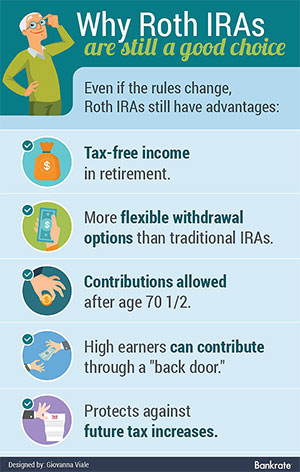Tips for Roth IRAs
Roth IRAs became very popular after the IRS eased rules for creating them with traditional IRA money. Now, five years later, droves of investors who did conversions in 2010 have reached the end of the five-year waiting period and so can qualify to gain penalty free access to their Roth IRAs…….. as long as they follow IRS guidelines. Yikes!
The utilization of any asset, whether qualified (IRA, 401(K), 403(b), etc) or non-qualified, when planning for the future requires a strategy which takes into account all assets which will be utilized for that plan. Various accounts typically have different rules by which they must adhere and it becomes critically important to coordinate these accounts to meet the goals and objectives of the plan. For example, delaying Roth withdrawals could help smooth the tax impact of required minimum distributions people must start taking from traditional IRAs and 401(K)'s after age 70½.
Here are some tips to capitalize on a Roth’s advantages in combination with other retirement or non-qualified assets:
First, Rules rule!
Contributions to traditional IRA's may be tax-deductible, but distributions are taxed upon withdrawal of the funds. A Roth IRA contribution, on the other hand, recieves no deduction, but withdrawal of funds is tax free. However, there are certain criteria for withdrawing the funds from a Roth IRA conversion without penalty. The rules are complex, so it might be worth consulting a tax expert before taking any distributions.Balance withdrawals to be Tax Efficient.
Traditional IRA and other tax-deferred accounts offer less control over taxes in during retirement because of the Required Minimum Distribution (RMD) rules which specify that owners of these accounts must begin taking distributions after they reach age 70½ whether they need them or not. These forced IRS distributions must be considered when building a tax efficient income strategy Suppose a retiree needs $75,000 for an unforseen emergency. A tax efficient strategy would utilize Roth assets prior to traditional IRA assets since the Roth withdrawal would not create a taxable event. Had this instance occurred and no other asset was available to be utilized, the distribution could have very a negative impact on the retiree'stax bracket, Medicare premiums and taxation of social security benefits. Distributions from a Roth are not taxable events as long as they are qualified distributions. Funds moved into a Roth from a traditional IRA must have been in the account for at least five years, and past age 59 1/2. The exceptions to this rule are for a first-time home purchase or the result of a death or disability. Asset Allocation and Type are Important. Due to the different tax and withdrawal rules that apply to Traditional and Roth IRA's it becomes important to maintain the proper asset allocation and asset type to each account. Traditional IRA owners past age 70½ will need to maintain enough liquidity in the account to cover RMD withdrawals. Cash, Interest and/or Dividend Securities or funds with yearly gains distributions may be adviseable for this account. Cash flow becomes the key. The Roth IRA, on the other hand, may want to hold assets that are more growth oriented with greater appreciation potential over a longer time frame. Cash flow becomes less important as future distributions are at the owners discretion.
At Aegis Financial, we believe a coordinated retirement income plan should consider all asset sources in concert with the short, intermediate and long term goals and objectives of the owner.
